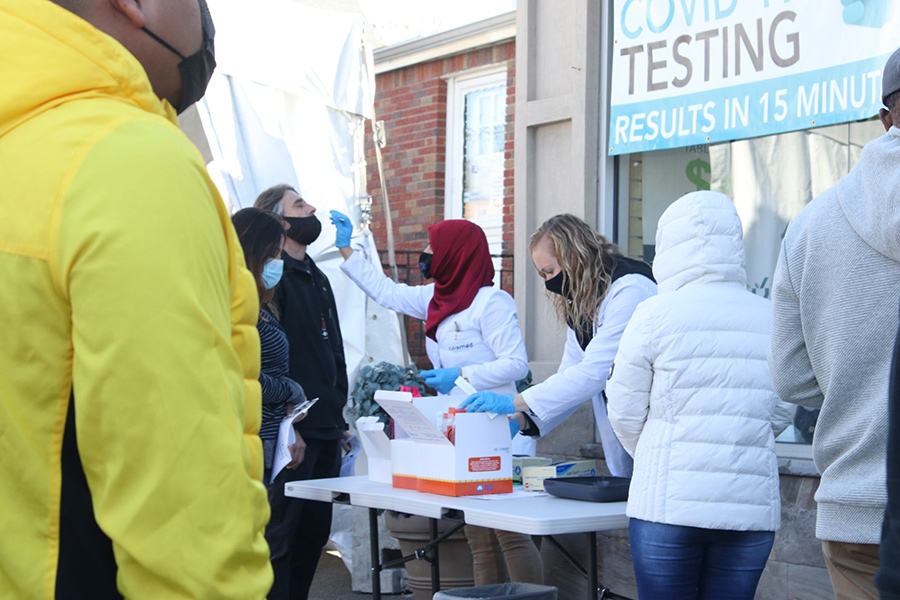In the year since COVID-19 arrived, the health care industry has accelerated use of virtual care, digitized workforces, instantaneously made the role health care employees play more fluid, reset utilization patterns as well as upended the balance between urgent care and treating people with chronic conditions.
As health care executives develop post-pandemic strategies, a pair of pressing questions: Which changes will outlast the pandemic and remain into the future? And which new processes or practices are likely to revert to pre-pandemic norms?
Health Evolution asked members of its Leadership Committee to share their expectations relative to those questions.
“The fundamentals introduced this past year will be a bridge to a new, more effective and satisfying system for consumers that addresses the full spectrum of their health needs,” said Karen Ignagni, President and CEO of EmblemHealth. “Our job is to build better tools for care managers to coordinate care seamlessly, quickly assess clinical risk and the need for social supports, and in culturally competent ways ease members’ ability to navigate through the health care system. That means new tools, new apps, innovative partnerships at all levels, and more flexible approaches to how and where associates want to work.”
Jaewon Ryu, MD, President and CEO, Geisinger, is anticipating that people’s comfort level with “all things digital” will sustain beyond the pandemic. “Not just in terms of receiving care via telemedicine, but also in terms of working remotely and reducing the need to travel for other gatherings,” Ryu said. “Another change that might stick is the resetting of some habitual utilization patterns where both patients and care teams will be more selective about the use of post-acute care settings and emergency rooms.”
As the strain on the health care system eases moving forward, the balance that COVID-19 necessitated between emergency response and treating people with chronic disease is likely to continue, according to Mike Mussallem, Chairman and CEO, Edwards Lifesciences.
“This reality hit close to home for Edwards as we saw patients with urgent needs related to their heart valve disease delaying treatment during the pandemic,” Mussallem added. “Sadly, for some, the resumption of surgeries or interventions came too late, but for others, it was shown that they could safely receive treatment even as COVID response continued.”
On the payer side, Ignagni said enterprises made a “massive digitization leap,” that required many to think and act bigger in reimagining how they work.
“Machine learning has been indispensable in understanding customer sentiment, determining rising risk, and supporting clinical evaluation of appropriate therapies. Telehealth will morph from one time encounters to a broader suite of digital health tools with linkage back to medical records,” she added. “This is the new normal and no one is going back.”
One area Ryu said is likely to return in the near future is the fluidity in the roles employees took during the crisis. He cited two of many examples as the staff from clinics and ORs who helped in the hospital, and administrative staff who stepped in to conduct screenings of people coming in the door.
“There was actually quite a bit of good that came out of that — some found they liked these new ways in which there was a greater appreciation of the different roles played by all members of the collective team,” Ryu said. “Perhaps somewhat disappointingly, I think the industry will revert back to the pre-pandemic state of more static and demarcated job roles.”
Mussallem, meanwhile, said he hopes that in-person idea sharing and collaboration return in the post-pandemic world.
“Medical technology innovation, physician partnerships, medical congresses or other collaborative creative activities are most effective when people can be together, and that health care innovation in particular is done best when bright minds with diverse ideas have a chance to be truly live – not just through a computer screen,” Mussallem said.
Ultimately, the degree to which the trends and processes COVID-19 accelerated remain or revert after the pandemic will largely depend on incentives, said Larry Jameson, MD, Executive Vice President of the University of Pennsylvania for the Health System and Dean of the Raymond and Ruth Perelman School of Medicine.
“Will payors support and incentivize telehealth, home health, and care provided by allied health care workers? Will incentives to redesign the work environment and the structures for meetings be adopted by employees? Will incentives for scientists and organizations to collaborate to address problems as challenging as COVID-19 overcome historical emphasis on individual credit?” Jameson said. “These are high risk changes to deploy and would benefit from pilots and examples of successful best practices.”
Homepage image credit: Photo by Jakayla Toney on Unsplash










